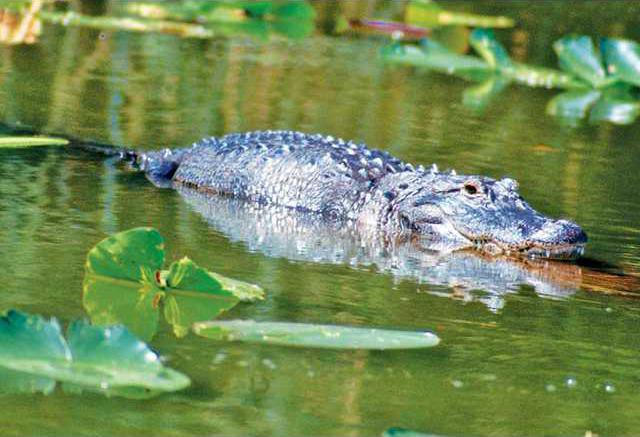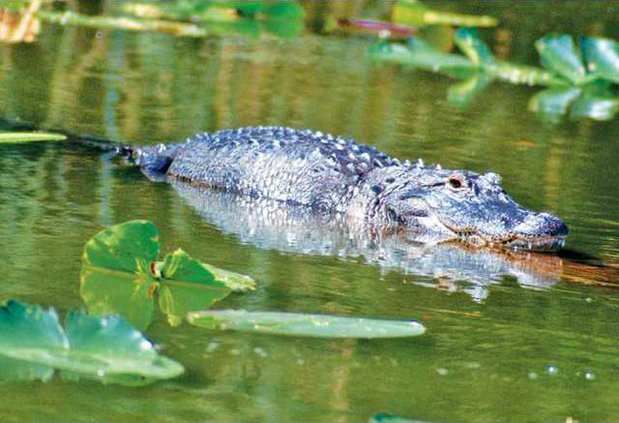BRUNSWICK — Motorists report seeing them slowly crossing primary or secondary roads, residents occasionally find them in the backyard swimming pool and beach-goers sometimes spot them sunbathing on the sand.
On Georgia’s coast, with more than 200,000 of them in the state, alligators can be just about everywhere.
It’s just one of many reasons why the Georgia Department of Natural Resources is proposing a management plan to foster the long-term conservation of the reptile.
The plan establishes regulation practices in the state’s nine harvest zones based on survey data that will keep the alligator population stable. It also promotes educating the public on the economic benefits of alligators and minimizing the conflicts between humans and the reptiles.
Glynn County is one of several counties that makes up Zone No. 7, which also includes neighboring McIntosh and Wayne counties.
This is the first comprehensive plan written for alligators, said John Bowers, assistant chief of the game management section with the Georgia Department of Natural Resources.
"This plan formalizes our strategies in how we’re going to go about managing the alligators," Bowers said.
"For decades, we have been monitoring the population through a variety of surveys and research efforts. We have taken that information and put it in a formal plan."
Due to greater protection, alligators have recovered from their endangered status in 1967, brought on by unregulated harvesting and poaching.
Georgia’s alligator population totals approximately 222,000 and is widely dispersed throughout the coastal plain region.
The state’s five-week long hunting season typically runs from early September through mid-October. More than 7,000 people apply for a hunting license each year, but the majority of applicants are not selected, Bowers said.
Zone No. 7 allows 130 alligator hunters during the season.
"It may take an individual, depending on (his or her harvest) zone, about three or more years to receive a license," he said. "The state-wide quota is set at 850 (hunters)."
Last year, the state department received more than $47,000 from hunting license fees for alligators.
Bowers said the new management plan basically outlines how the state department currently manages the alligator population and will not change the hunting experience.
"The biggest change we’ve set down ... is a decision-tree relative to the hunting season for how we will establish quotas and regulate the harvest, which is dependent on population surveys. If alligators in a particular management zone are above a certain level, we’ll re-evaluate the quota. If it drops below a certain level, (hunting) will be restricted.
"The goal is to ensure we conserve alligators across the state so they’ll always have a presence here."
The plan also calls for using funds to develop public wildlife watching areas, such as nature and canoe trails, to increase non-consumptive alligator recreational opportunities.
In addition, the management plan will continue its nuisance abatement program for the public, which provides a licensed wildlife control operator to remove an alligator that is at least 4 feet long, from private property.

